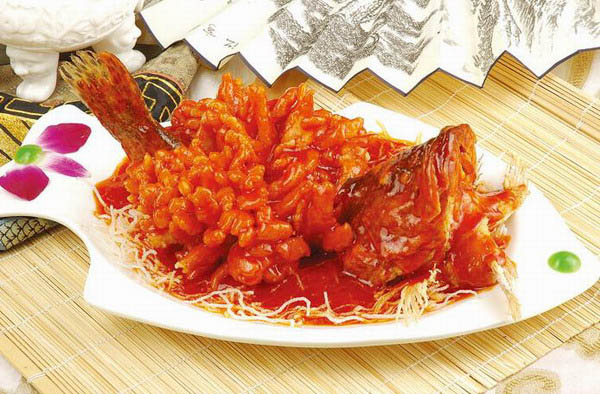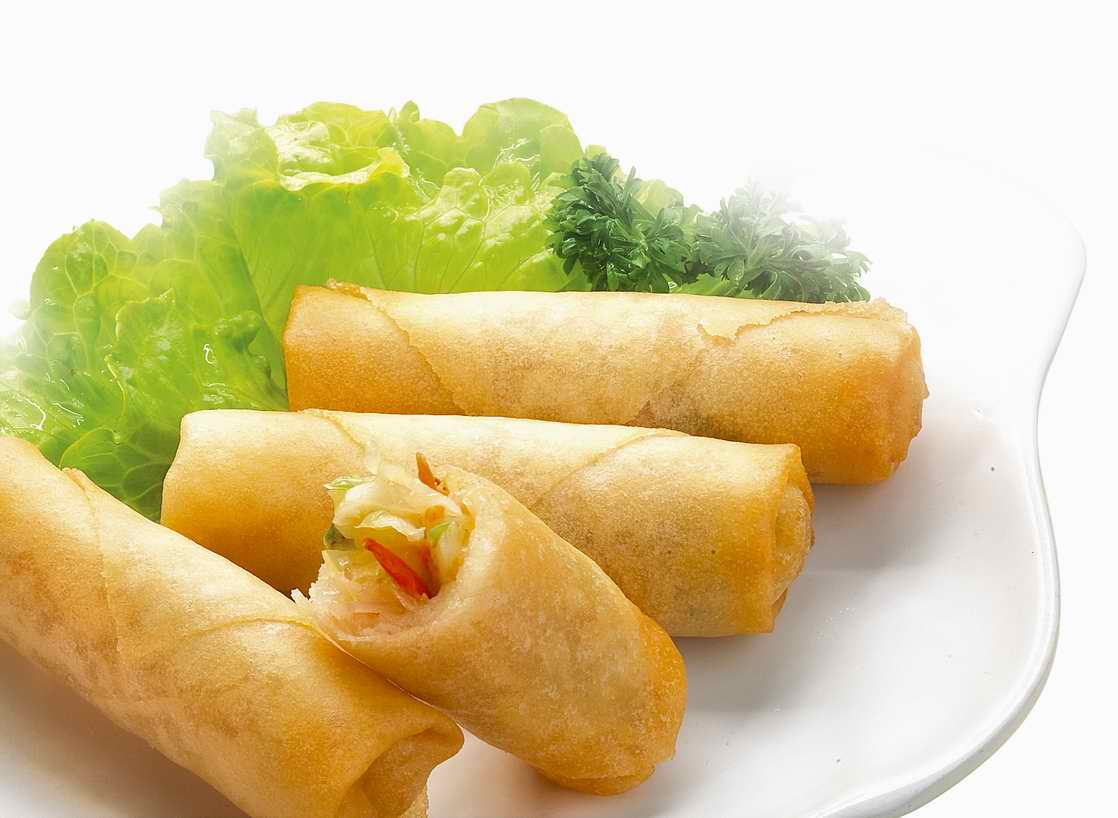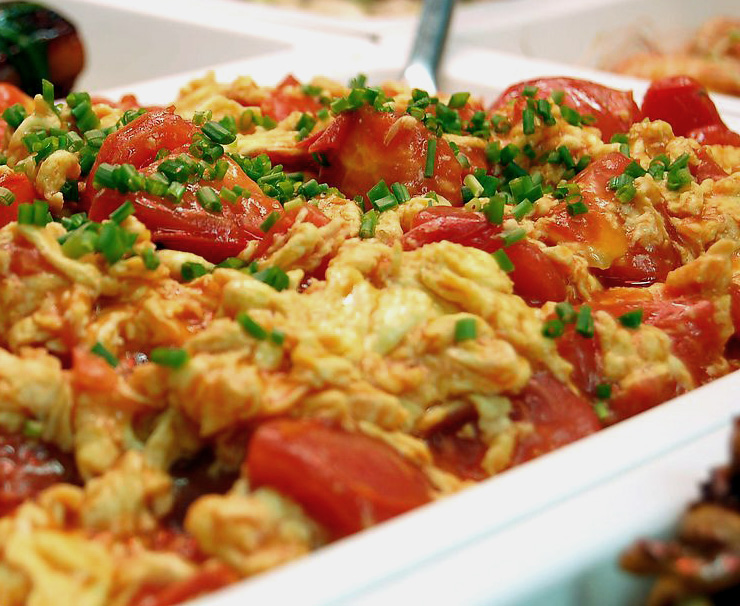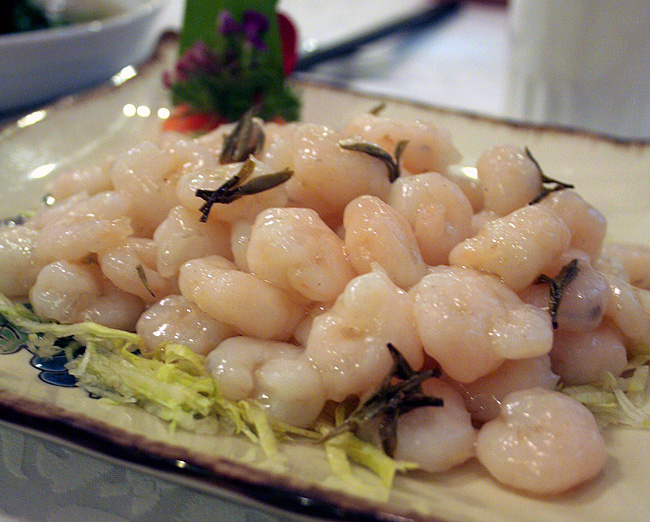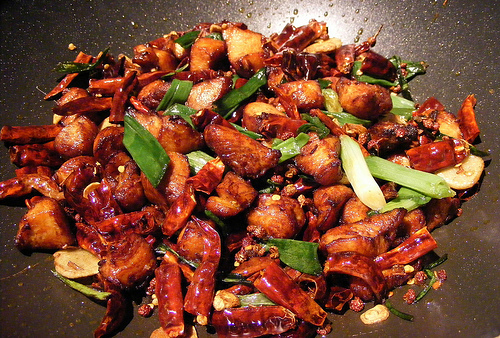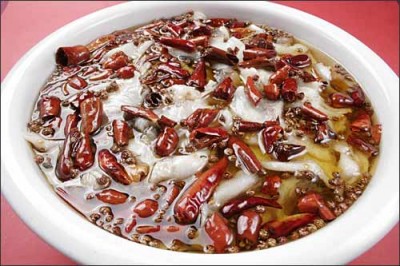Chinese Hot Pot or Steam Boat
On a cold winter night, there is nothing like a good Chinese hot pot to warm you up.
The Chinese hot pot boasts a history of more than 1000 years; it is a great creation by Chinese and has spread over to many other countries. It is extremely favoured by the Chinese people. There are restaurants which specialize in hot pot attracting people who prefer to cook their own style.
Chinese Hot pot or Steam boat, refers to a variety of stew, using a constantly boiling metal pot of stock (as broth/ soup base). Placed at the centre of the dining table, raw and fresh ingredients are laid out around the pot. Typical hot pot dishes would include thin slices of meat, vegetables, mushroom, wonton and a variety of seafood. The ingredients are cooked in the simmering pot and usually eaten after dipping in sauce.
History
 The hot pot originated from the Mongolians and first appeared in China early Qing Dynasty. It became popular after Manchu army passed the Shanghai Pass in 1644.
The hot pot originated from the Mongolians and first appeared in China early Qing Dynasty. It became popular after Manchu army passed the Shanghai Pass in 1644.
Early in the 18th century of China, during the reign of Emperor Kangxi and Qianlong, Hot Pot was already featured upon their royal cruisine. Hot Pot later also became popular in Muslim restaurants.
1854, Zhengyang Restaurant was opened outside Qianmen in Beijing. This became the first Han restaurant with Hot Pot. The restaurant was renowned and exceptionally famous for its mutton being sliced as thin as paper.
Hotpot today has become widely popular in most of China. Many modern homes, particularly those in big cities, have replaced the traditional coal-heated hot pot or steam boat with more convenient electric, gas or induction cooker versions.
Regional variations
Several more distinct variations and styles have developed for the Chinese Hot Pot.
Beijing Hot Pot
Hot Pot in Beijing is eaten all year round. The typical Beijing Hot Pot is eaten indoors in winter. There are a few types of Beijing Hot Pot. More modern restaurants offer sectioned bowl with different flavoured broths in each section.
The more traditional ones will serve the Hot Pot in a large brass vessel pot, with burning coals beneath and a chimney structure in the centre, forming a deep donut shaped pot. The broth is typically mild and fragrant.
Manchurian Hot Pot
[showadc]
The Manchurian Hot Pot is characterized by its plenty use of suan cai (Chinese sauerkraut) or Chinese pickled cabbage or sauerkraut. It provides a distinct flavouring for the soup. Hence, Manchurian Hot Pot is also known as Suan Cai Hot Pot.
The pickled cabbage pickled flavor is not too heavy hence the vegetable flavor still remains. The smell and the taste of sauerkraut are able to increase your appetite. Fatty pork is sometimes added to provide a complementing flavour to the soup base. The special flavour of the Manchurian Suan Cai Hot Pot has made it famous in the whole of China in recent years.

Sichuan Hot Pot
Sichuan Hot Pot is one of the most famous variations. It is well-known to have a heavily spicy taste, leaving a burning and numbing sensation in your tongue. The Sichuan Hot Pot is hence commonly also known as Ma La Hot Pot (Ma la meaning Numb and Spicy). The special spice added to the broth is the Hua Jiao (“Flower Pepper” or Sichuan Pepper).
In your Sichuan Hot Pot, it is common to have a variety of different meats including sliced mutton fillet.
Sichuan Hot Pot is quite different from other types of Hot Pot in China. The type of meat and soup base used and the sauces and condiments for flavouring the meat are all distinctively unique. The cities of Chengdu and Chongqing in Sichuan province are both famous for their many types of Sichuan Hot Pot.

Sichuan Hot Pot also offers an alternative. For those who do not fancy and cannot fanthom why many people are addicted to this fiery and numbing sensation of the Sichuan pepper, you can opt for a split pot.
Yuan Yang Hot Pot
A split pot as seen on the picture above, dividing the pot into 2 sections resembling the yin & yang symbol in Taoism, allows two different soup base in the pot to suit everyone’s taste at the dining table. This type of Hot Pot design is also known as Yuan Yang Hot Pot or Mandarin Duck Hot Pot (Yuan Yang refering to Mandarin ducks which are commonly seen in pairs).
Cantonese Hot Pot
The Cantonese variation involves mixing a raw egg (sometimes with condiments like soya sauce) and pouring into the broth. According to Chinese herbalist theories, this will reduce the ‘heatiness’ absorbed by the food and thus reduce the tendency of getting a sore throat after your Hot Pot meal. In the broth also contains Chinese herbs and mutton chunks cooked with rice wine and root ginger, which helps remove the rank flavour in the mutton.
Herbs used in food has a long history in china, different kinds of herbs have different functions in people’s health. The Chinese, and especially the Cantonese, are avid users of medical herbs. The Cantonese Hot Pot lets you enjoy delicious food while taking your health into consideration.
Taiwanese Hot Pot
The Taiwanese hot pot is also called shabu-shabu due to its Japanese influence. It uses thinly sliced meat and vegetables, and is usually served with Japanese-flavored dipping sauce. Shabu-shabu is quite different from Chinese styled Hot Pot. It is a little bit sweet and sometimes savory.
While considered a winter dish, it is eaten all year round. People eat the food with a dipping sauce consisting of shacha sauce (a Chinese condiment with dried shrimp and other spice as ingredients) and raw egg yolk.

Fusion Hot Pot
Recently, newer innovations of the Hot Pot are flourishing in modern cities like Shanghai. These Fusion Hot Pot establishments offer a mix and match of different styles. You can pick your own soup base, meat, vegetables and sauce from an endless list of choices.
Some restaurants also offer mini Hot Pot. These mini Hot Pots are smaller variations so each individual will have their own mini hot pot with their desired broth and ingredients.
DIY Hot Pot
Lastly, there is your Do-It-Yourself Hot Pot. With electric and induction cooking hot pots easily available, many Chinese do set up their own Hot Pot right on their own dining tables. Staying cozy in your homes in winter and having a warm hearty Hot Pot dinner with families and friends is possibly the best meal you can have.
There is no one way of setting up your DIY Hot Pot, just whatever suits you and your dinner companions taste buds. You can also cook noodles in the pot or have steamed rice with the food.

The Technique and Etiquette of Eating Hot Pot
If you are already salivating and can’t wait to join your Chinese friends in a Hot Pot meal, hold on a minute. If this is your first time around a Hot Pot table, knowing some basic techniques and etiquette will save you some embarrassment.
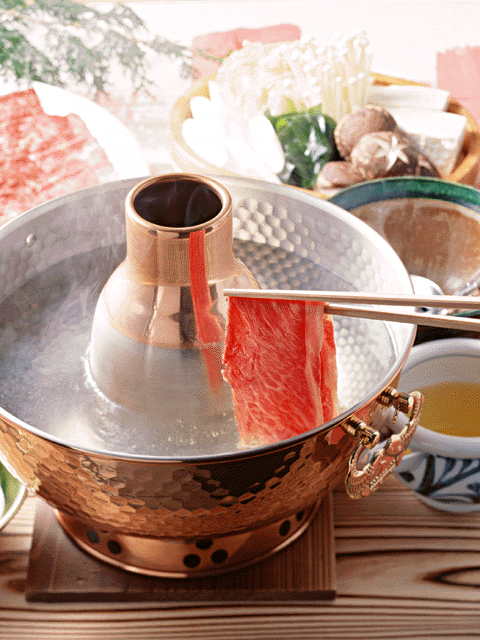
The Tools
Tools used are simple. Basically other than the Hot Pot, you will need a pair of cooking chopsticks and a small perforated ladle.
The ladle can be used to cook small items that will potentially be lost in the broth, for example thin sliced meat. With the food item in the ladle, dip it into the boiling broth.
Feel free to bob the ladle up and down to ensure it cooks thoroughly. When retrieving, let the broth drain properly before taking the ladle out to prevent spilling.
Cooking the Food
You may throw larger items into the pot for yourself and the rest of your table at any time.
However, for certain seafood like live prawns, clams and abalone, which takes longer to be cooked, it is generally a good etiquette to ask your Hot Pot companions first. They may want to scoop some food out of the pot before you place them in.
The time waiting for your food to be cooked is not wasted during your Hot Pot meals. It is an excellent time to interact with your families and friends.
Tip
The Art of cooking your food at a Hot Pot involves making sure you get to taste the freshest and meats, seafood and vegetables possible.
Grasping the cooking time is key, ensuring that your food is not overcooked, which will make your meats too tough and your vegetables soggy.
Meat that is sliced thinly requires a very short cooking time. Using the chopstick or ladle, dip the meat in the boiling soup for approximately 20-30 seconds and take it out just as the last bit of pinkness leaves the meat.
Seafood requires a longer time to cook. Overcooking them will leaves u a tough texture and lose the natural flavour, so you may need to check on them often in the pot.
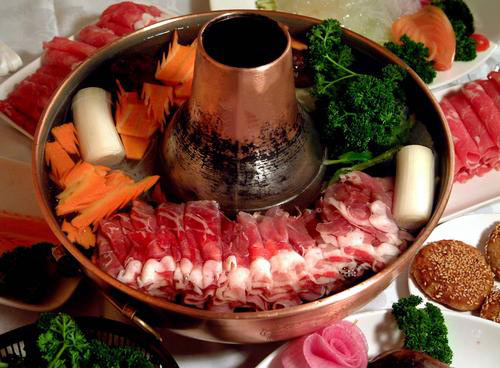
Hot Pot Hygiene Tip
- Always wash hands before handling food and eating.
- Choose fresh food from quality supermarkets.
- Wash and cook all food thoroughly.
- Cook seafood for five more minutes before eating.
- Use different sets of chopsticks to handle raw and cooked meat to avoid cross contamination.
Vocabulary
火锅 huǒ guō hot pot
电磁炉 diàn cí lú induction cooker
涮羊肉 shuàn yáng ròu instant-boiled lamb


